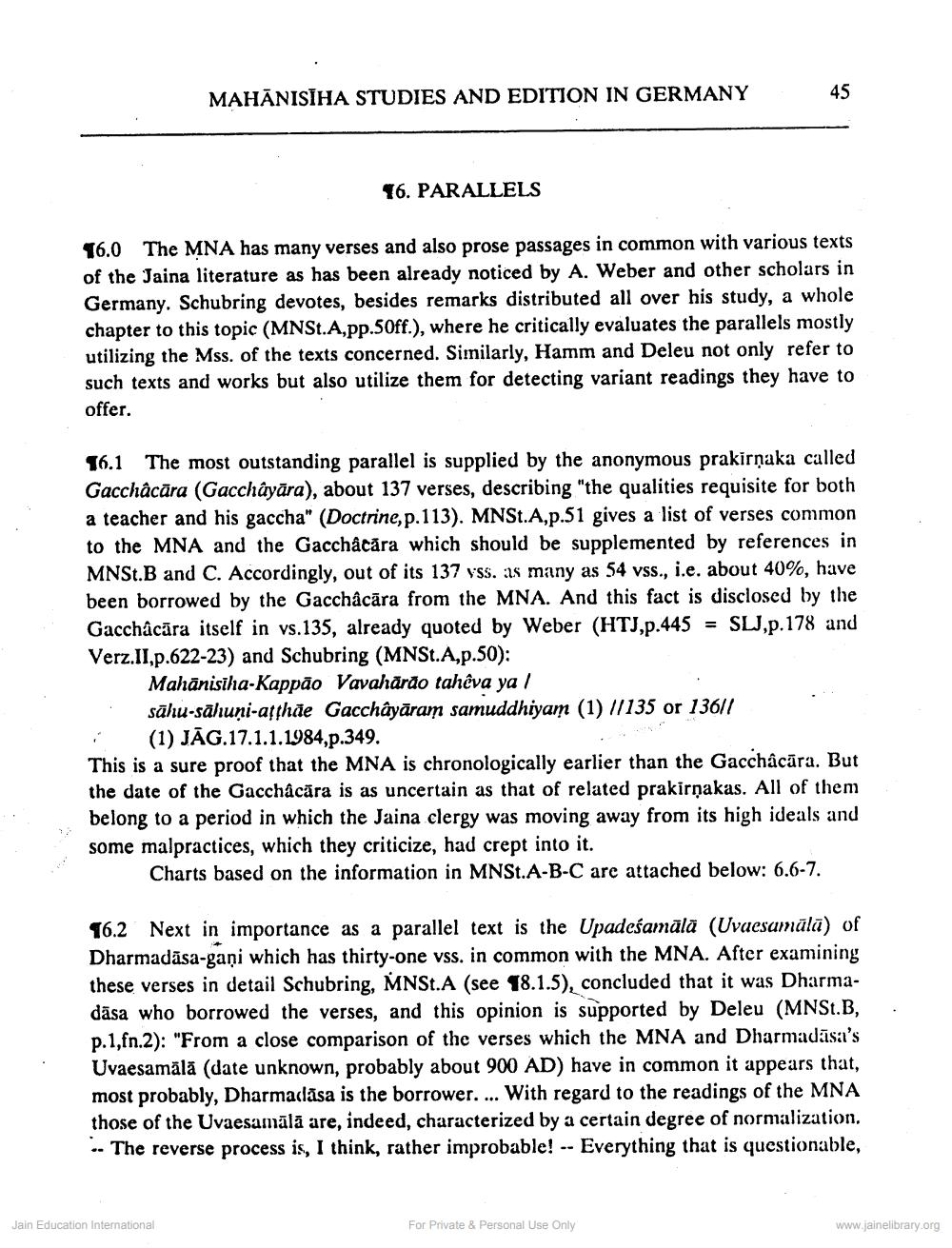________________
MAHĀNISĪHA STUDIES AND EDITION IN GERMANY
45
16. PARALLELS
16.0 The MNA has many verses and also prose passages in common with various texts of the Jaina literature as has been already noticed by A. Weber and other scholars in Germany. Schubring devotes, besides remarks distributed all over his study, a whole chapter to this topic (MNSt.A, pp.50ff.), where he critically evaluates the parallels mostly utilizing the Mss. of the texts concerned. Similarly, Hamm and Deleu not only refer to such texts and works but also utilize them for detecting variant readings they have to offer.
16.1 The most outstanding parallel is supplied by the anonymous prakirņaka called Gacchâcāra (Gacchâyāra), about 137 verses, describing "the qualities requisite for both a teacher and his gaccha" (Doctrine,p.113). MNSt.A,p.51 gives a list of verses common to the MNA and the Gacchâcára which should be supplemented by references in MNSt.B and C. Accordingly, out of its 137 yss. as many as 54 vss., i.e. about 40%, have been borrowed by the Gacchâcāra from the MNA. And this fact is disclosed by the Gacchâcāra itself in vs.135, already quoted by Weber (HTJ,p.445 = SLJ,p.178 and Verz.II,p.622-23) and Schubring (MNSt.A,p.50):
Mahānisiha-Kappão Vavahārão tahêva ya/ sāhu-sähuņi-atthăe Gacchâyāram samuddhiyam (1) 1/135 or 13611
(1) JĀG.17.1.1.1984, p.349. This is a sure proof that the MNA is chronologically earlier than the Gacchâcāra. But the date of the Gacchâcāra is as uncertain as that of related prakirņakas. All of them belong to a period in which the Jaina clergy was moving away from its high ideals and some malpractices, which they criticize, had crept into it.
Charts based on the information in MNSt.A-B-C are attached below: 6.6-7.
16.2 Next in importance as a parallel text is the Upadeśamālā (Uvaesumālā) of Dharmadāsa-gani which has thirty-one vss. in common with the MNA. After examining these verses in detail Schubring, ẢNSt.A (see 18.1.5), concluded that it was Dharmadāsa who borrowed the verses, and this opinion is supported by Deleu (MNSt.B, p. 1, fn.2): "From a close comparison of the verses which the MNA and Dharmadāsa's Uvaesamālā (date unknown, probably about 900 AD) have in common it appears that, most probably, Dharmadāsa is the borrower. ... With regard to the readings of the MNA those of the Uvaesamālā are, indeed, characterized by a certain degree of normalization. -- The reverse process is, I think, rather improbable! -- Everything that is questionable,
Jain Education International
For Private & Personal Use Only
www.jainelibrary.org




